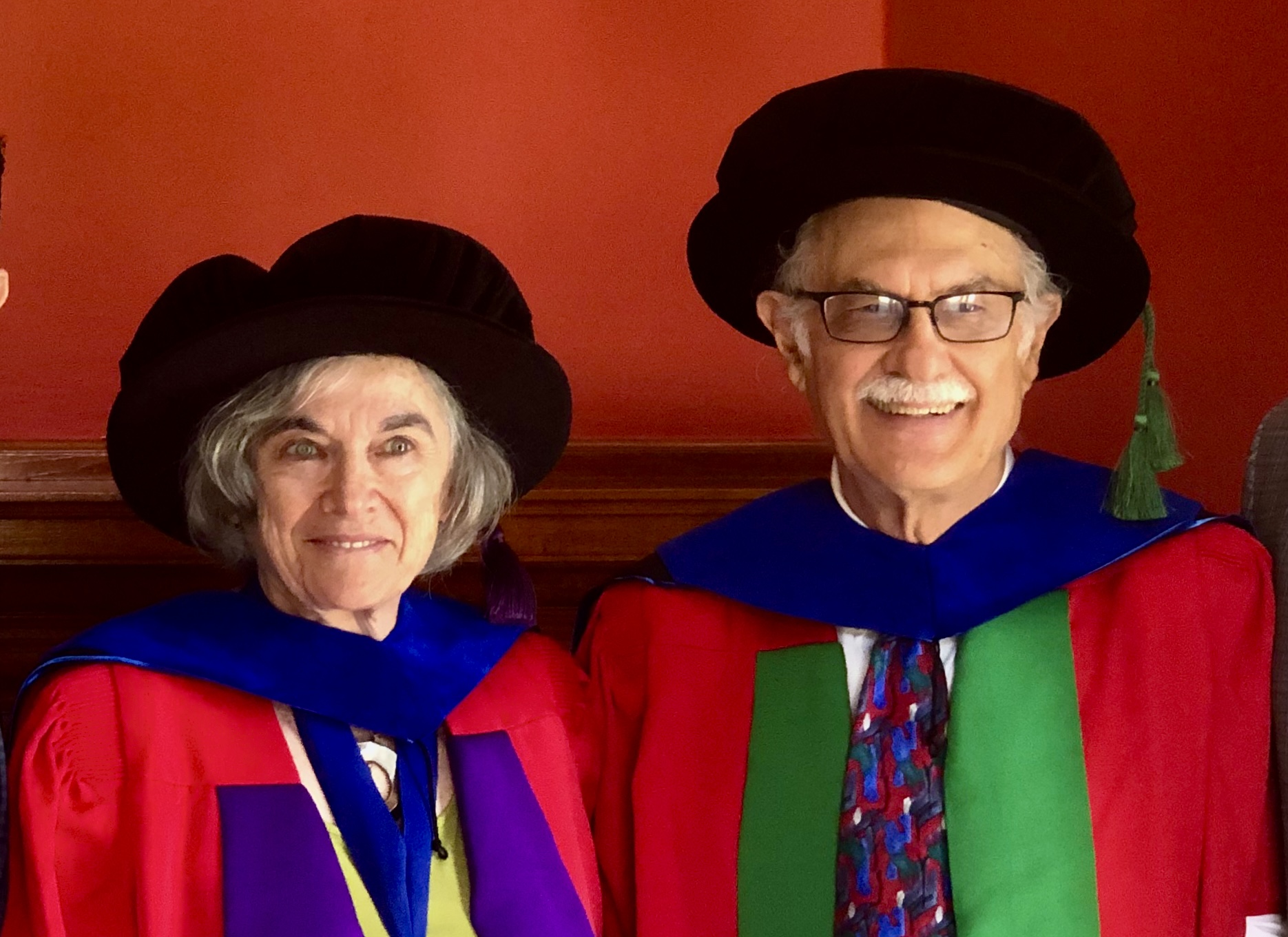Celebrating 10 Years at the ‘Interface of Science and Engineering’

By Erin Frick
ALBANY, N.Y. (Feb. 11, 2025) — Developing solutions to today’s most pressing challenges requires thinking and working across disciplines. To encourage this sort of collaboration in research labs at the University at Albany and Rensselaer Polytechnic Institute (RPI), Professors Marlene and Georges Belfort conceived the “Life at the Interface of Science and Engineering” (LISE) lecture series — an endowed annual event that has brought pioneering scientists to the Capital Region to engage with students and faculty at both institutions since 2016.
“Georges and I started this series because we wanted to give back to our universities,” said Marlene Belfort, distinguished professor and senior advisor of UAlbany’s RNA Institute at the College of Arts and Sciences. “And, because our individual research programs have benefited hugely from our collaborating across the boundaries of basic science and engineering, we thought we’d endow a lecture series that brought interdisciplinary speakers to our two campuses.”

The “Life at the Interface of Science and Engineering” series addresses fundamental questions that require the expertise of both life sciences and engineering to answer. In celebration of the series’ 10th anniversary, this year, for the first time, the lecture will be held at the annual meeting of the American Association for the Advancement of Science, which will convene in Boston on Feb. 13-15.
Nobel laureate and MIT emeritus professor Phillip Sharp will present this year’s talk, “Discovery in Life Sciences: Biotechnology and Convergence with Engineering,” at 1 p.m. Friday Feb. 14. The event will be livestreamed for all who wish to view. Tune in here.
Sharp’s research at MIT’s Department of Biology and the Koch Institute for Integrative Cancer Research centered on the molecular biology of gene expression relevant to cancer, and the mechanisms of RNA splicing. In 1977, his research provided the first indications of “discontinuous genes.” This discovery, which fundamentally changed scientists’ understanding of gene structure and opened new avenues of research towards RNA splicing, was recognized by a 1993 Nobel Prize in Physiology or Medicine.

“Phillip Sharp is a legend in RNA science and in encouraging the convergence between biology and engineering,” said Georges Belfort, Endowed Institute Professor of Chemical and Biological Engineering at RPI. “He really embodies the spirit of the lecture series. He is also the co-founder of several large biotech companies in Cambridge, Mass., making him a local, given that this year’s lecture will be held in Boston.”
As the 2025 LISE presenter, Sharp will share insights on how emerging AI technologies and computational capabilities will help drive convergence among the medical, physical and engineering sciences in order to advance critical societal challenges.
“Because the speakers in this series all need to practice research at the interface of different disciplines, and their subject matter should be topical, the series is ever-evolving,” said Georges Belfort, who is also a member of the National Academy of Engineering. “For example, after the COVID pandemic lockdown, we invited two speakers on the same day to talk about vaccines. A basic scientist from Moderna spoke at UAlbany about the development of the mRNA vaccine, and an engineer from MIT talked at Rensselaer about delivery vehicles for the mRNA.”
One of the Belforts’ goals for the LISE lecture series is to foster collaboration between labs at the two universities.
“With this series, and this talk in particular, we hope that our students develop an even deeper appreciation of how fundamental science fuels discovery that is translated into lifesaving application by engineers who power the biotech industry,” said Marlene Belfort, who at UAlbany is affiliated with the Departments of Biology and Biomedical Sciences. “This year’s LISE lecture will offer an opportunity for our faculty and students to interact—both with Phil and with one another — to make this sort of critical, convergent science happen.”




